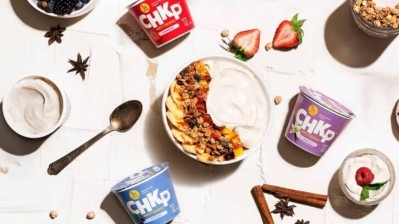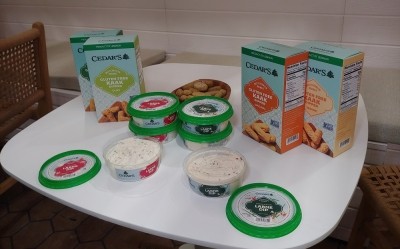Hummus for children? Little Sesame addresses lemon supply chain issues to dip into new segment

“Hummus is such a good food for kids. It is very nutrient-dense and has a lot of protein. And with our hummus, it [has] a super clean label that parents can trust. So, it is a perfect snack, and there has not been a product that was built specifically for kids,” Nick Wiseman, co-founder and CEO of Little Sesame, told FoodNavigator-USA.
‘Hummus is moving away from a snack and more to the center of the table’
Little Sesame's Kids Hummus cups are available in a four-pack of 2.5-ounce cups at Whole Foods Market and through its website. Additionally, Little Sesame sources its ingredients directly from farmers — chickpeas and lemons for its preservative — to create its Certified Organic and Clean Label Certified products, Wiseman explained.
Like its other products, the Kids Hummus contains 1 gram of total sugars, 2 grams of protein and 125 milligrams of sodium per two-tablespoon serving, but features branding that resonates with kids, Wiseman shared. The packaging features a superhero chickpea, and the smaller cup format provides "an easy healthy snack or meal on the go," he added.
Consumer interest in the Mediterranean diet and health-related trends spurred growth in hummus in recent years, allowing the category to spin off in new directions, Wiseman explained.
The global hummus market is expected to reach $911 million in sales this year, growing by a 3.14% CAGR from 2019-2024, according to Statista data.
"This hummus for kids is a prime example of how we bring a new customer to the category, and where we want to be is how can we be accretive and grow the hummus category in the US. ... Hummus is moving away from a snack and more to the center of the table. It makes sense because it does dovetail well with broader food trends," Wiseman elaborated.
Regen ag is a ‘big opportunity to help solve climate change’
Earlier this year, Little Sesame received $2.5 million in capital through a United States Department of Agriculture grant to bolster its supply chain, which meant moving “farmers off of conventional farming and move them to organic” and from wheat to chickpea, he said.
“We have been sourcing regenerative chickpeas from a group of growers in Montana, and ... [that] type of farming really builds healthy soil, and from healthy soil builds healthy ecosystems and holds more carbon. And it is really a big opportunity to help solve climate change,” Wiseman continued.
Climate change-induced heatwaves in late spring and early summer across Little Sesame’s lemon supply chain impacted availability, Wiseman explained.
“We were buying larger lemons for a big chunk of the year, which meant that they were less acidic, and we needed more fruit in our formulation, so our product cost surged by almost 5% just because of the additional [lemons] we needed from a safety perspective in our formulation. So, we have seen that these extreme weather events are definitely impacting farming," Wiseman elaborated.
Little Sesame plans to raise ‘a substantial series A in 2025’
Little Sesame also received an influx of capital through a seed extension earlier this year, which went to scaling up the business and bolstering staff and production, Wiseman said.
“We raised some capital in 2024. It was an extension of a seed round, a setup to our series A. That capital gave us the opportunity to scale the brand nationally, build our production capacity, and then add talent to our team. Our plan is to go raise a substantial series A in 2025,” Wiseman added.
The funding environment remains challenging heading into 2024, but "brands that have traction" can still raise money, he noted.
“There is still capital out there. We have [diversified] how we fund our business. It is not just equity, not just venture money. Most of our capital is venture money, but we have also forged partnerships like the USDA grant. We work with Walden Mutual Bank, which funds sustainable food businesses, and so we have really looked to values-aligned partners as well as traditional equity markets,” Wiseman said.




















